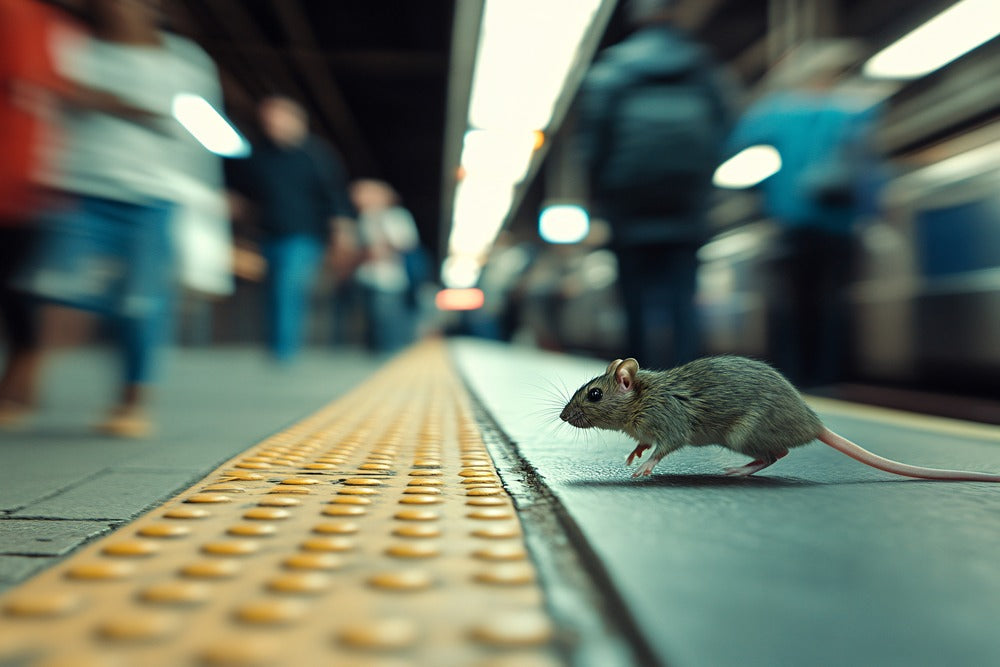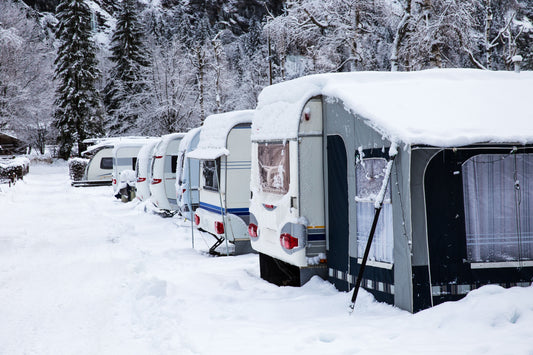
Top 10 Rattiest Cities in America (2025 Update)
Share
Anyone who’s ever spent time in a major city knows the frustration of living amongst rodents. They’re in the subways, they’re in the sewers, they’re in the alleyways and in the trash. They’re everywhere. But which U.S. cities are dealing with the worst of it?
Every year, pest control giants Orkin and Terminix release data on the number of rodent-related services they’ve completed — offering a reliable look at the rattiest cities in America. While the rankings vary slightly between the two, one thing is clear: the biggest rodent problems tend to strike the country’s largest urban centers.
We’ve averaged both lists to give you a comprehensive rundown of the top 10 rattiest cities in America, factoring in geographic consistency and national pest control data.
Why Are These the Rattiest Cities?
Several overlapping factors tend to drive rodent populations through the roof in these metro areas:
- Dense urban housing, which offers endless hiding spots and food sources
- Old infrastructure, including aging sewers, alleys, and utility lines
- Warmer winters, which reduce seasonal die-offs
- Trash management policies (or lack thereof), especially in areas like NYC
- Bans on certain rodenticides, such as California’s Poison-Free Wildlife Act
Together, these factors create the perfect storm for rats to thrive — and cities are struggling to keep up.

The Top 10 Rattiest Cities in America
1. New York City
(Terminix: 1 | Orkin: 3)
Pizza Rat … need we say more?
A recent study claims that there are now over 3 million rats in NYC — a 50 percent increase since 2010. The problem has grown so large that in 2023, the city appointed its first “Rat Czar” to combat the issue full-time.
2. Los Angeles
(Terminix: 3 | Orkin: 2)
While rodents have long been a problem for the cold-weather, older cities of the Northeast, the urban areas of California have grown into hotspots as well. Some have pointed to the state’s passing of the Poison-Free Wildlife Act, which banned most rat poisons, as a possible accelerant.
3. San Francisco
(Terminix: 2 | Orkin: 4)
In recent years, San Francisco has seen its rodent population balloon. According to a study by Science Advances, the city has experienced a 10% increase in rats over the last 12 years — largely due to rising urban temperatures.
4. Chicago
(Terminix: 6 | Orkin: 1)
Chicago has topped Orkin’s list for 10 consecutive years. With over 180,000 rat complaints since 2020 and a sprawling alley system, the Windy City continues to struggle with infestations.
5. Washington D.C.
(Terminix: 5 | Orkin: 5)
By most accounts, Washington D.C.’s rodent problem is bad — and getting worse. A 2024 study by RentHop found that the nation’s capital had the highest number of rat complaints per 10,000 residents.
6. Philadelphia
(Terminix: 4 | Orkin: 7)
According to Pest Control Technology, nearly 30% of households in Philadelphia County reported rodent problems in 2024 — the highest household rate in the U.S.
7. Denver
(Terminix: 13 | Orkin: 6)
Representing the Mountain region, Denver’s rodent problem proves that rats and mice aren’t just a coastal concern. On several occasions in the last five years, the city has even closed down public parks due to infestations.
8. Baltimore
(Terminix: 11 | Orkin: 9)
The rodent problem in Baltimore has escalated to the point that the city has begun using rat contraceptives in place of traditional bait poisons to better manage its growing population.
9. Boston
(Terminix: 8 | Orkin: 12)
Though complaints slightly dipped last year, Boston remains one of the most rodent-infested cities in America. In 2024, city officials implemented a rat control action plan for every neighborhood.
10. Detroit
(Terminix: 16 | Orkin: 8)
Detroit has climbed Orkin’s rankings each of the last three years, prompting the city to spend upwards of $300,000 annually combating the problem — including providing free traps and bait stations to residents.

What Cities Are Doing to Fight Back
Here are just a few examples of how major cities are attempting to rein in their rat populations:
- New York City: Hired a full-time “Rat Czar” and rolled out new trash timing rules to limit curb exposure
- Baltimore: Testing non-poison contraceptive treatments to slow population growth
- San Francisco: Increased investment in waste management and public sanitation
- Chicago: Offers free rat baiting services to residents and businesses upon request
- Boston: Created a multi-neighborhood rodent response plan and public education campaign
Why You Should Be Worried About Rodents
Rodents are more than a nuisance — they can spread dangerous, even deadly, diseases through their droppings and other waste. It’s extremely important to take safety precautions, including wearing gloves and a mask, when disposing of rodent debris.
Vehicle owners — especially those who store their cars, vans, or RVs for extended periods — are also at risk for costly damage. It’s estimated that in the U.S. alone, mice and rats cause over $200 million in vehicle repairs each year.
Signs of a Rodent Infestation
- Droppings: Small, dark pellets near baseboards or storage areas
- Gnaw marks: Chewed cardboard, wiring, or furniture
- Unusual odors: Sharp, ammonia-like scent from rodent urine
- Food caches: Seeds, crumbs, or pet food stashed in hidden corners
How to Protect Your Property from Rats and Mice
At Home
- Seal entry points: Use steel wool and caulk to block cracks around vents, windows, and utility lines
- Secure food and trash: Use sealed bins and airtight storage containers
- Declutter indoor/outdoor spaces: Piles of clothes, paper, or yard debris provide nesting spots
In Your Vehicle or RV
- Inspect regularly: Especially if the vehicle is in storage or unused
- Avoid leaving food: Even crumbs can attract rodents
- Use deterrents: Consider peppermint oil, mothballs, or the Box-Kat rodent barrier for long-term protection



